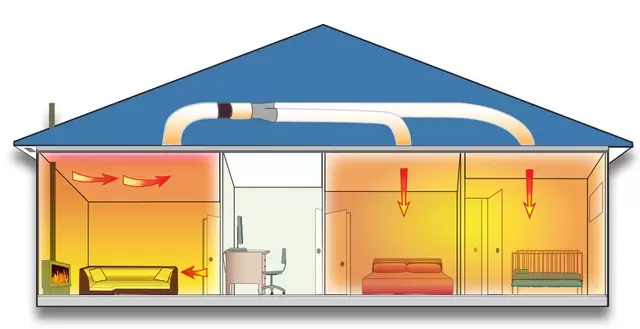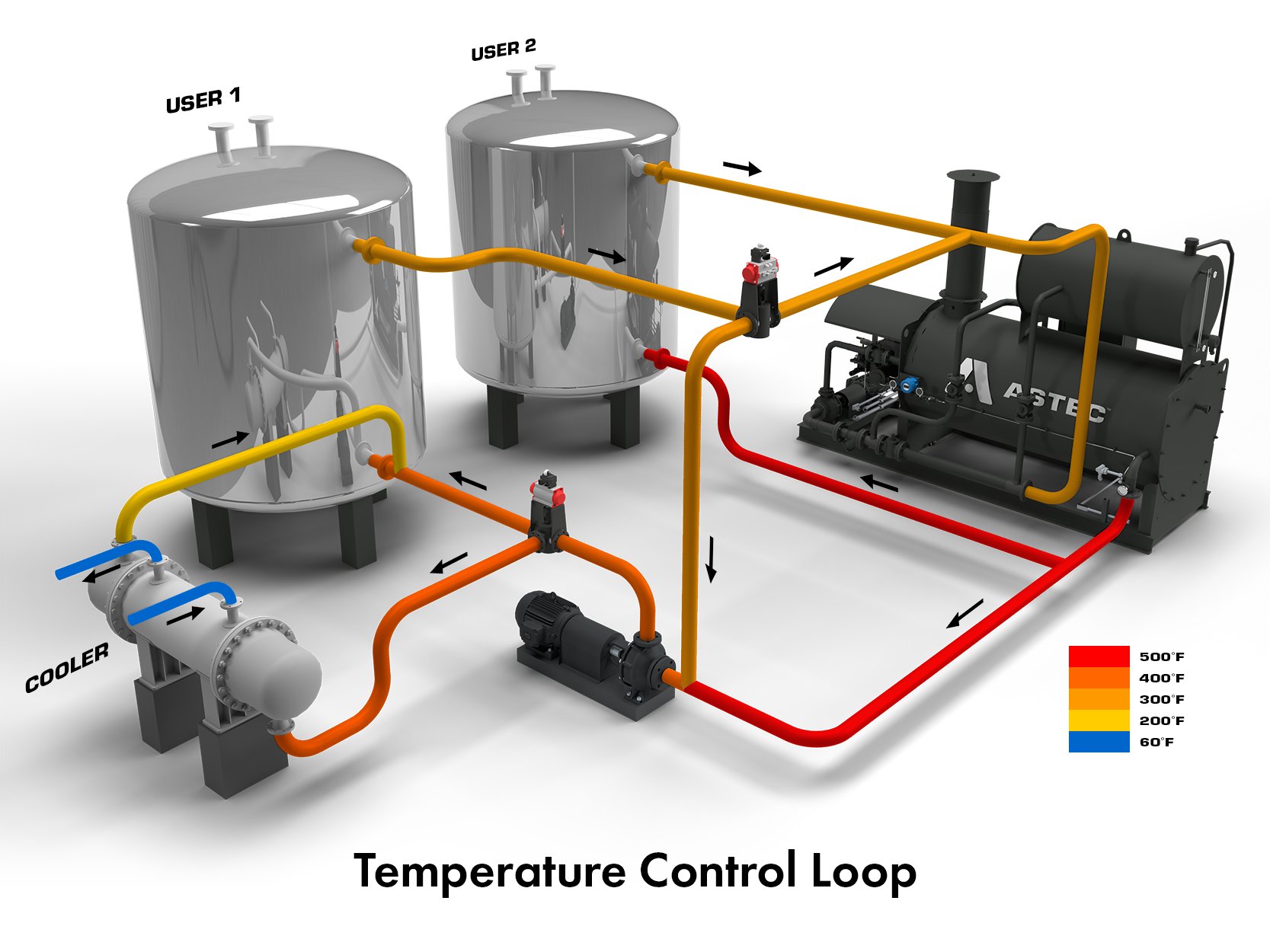Exploring the Benefits and Applications of Heat Transfer Equipments in Modern Industry
Heat transfer systems play a vital function in modern-day sector. They incorporate different systems such as radiation, convection, and transmission, each adding to efficient thermal monitoring. Industries like production and aerospace advantage greatly from these systems. As innovations continue, the integration of ingenious materials and technologies assures to boost energy effectiveness. This development raises vital concerns about the future effects for sustainability and functional expenses throughout several industries. What exists in advance in this ongoing makeover?
Recognizing Heat Transfer Concepts
Heat transfer principles are essential to the procedure of various commercial systems. These principles incorporate the systems of convection, radiation, and conduction, each playing a crucial role in taking care of thermal energy. Recognizing conduction entails examining how Heat relocates with strong materials, while convection concern Heat transfer in fluids, driven by fluid activity. Radiation, distinctive from the other two, includes energy transfer with electro-magnetic waves. The effectiveness of Heat transfer influences system performance, energy intake, and overall performance. Efficient thermal management is essential in procedures such as Heat, heating, and cooling recuperation. By understanding these principles, markets can optimize their operations, decrease energy costs, and enhance devices durability, consequently adding to an extra sustainable and efficient industrial landscape.
Key Kinds Of Heat Transfer Solutions
While different markets use Heat transfer systems for varied applications, a number of vital kinds stand apart because of their certain features and performances. One of the most usual kinds include radiation, conduction, and convection systems. Conduction systems transfer Heat through straight call in between materials, making them efficient in solid-state applications. Convection systems, on the other hand, utilize fluid activity to move Heat, appropriate for heating or cooling down gases and fluids. Radiation systems operate without a medium, relying upon electromagnetic waves to move Heat, suitable for high-temperature environments. Each type serves distinct purposes, permitting sectors to tailor their Heat transfer remedies based upon operational needs, power performance, and cost-effectiveness. Understanding these systems is necessary for enhancing performance in numerous commercial setups.
Industrial Applications of Heat Transfer Technologies
The application of Heat transfer modern technologies in market plays a necessary role in boosting power efficiency and maximizing procedures. DVS Heat Transfer Systems. By applying advanced Heat exchange systems, companies can considerably decrease their ecological effect while improving total performance. This assimilation not just fosters sustainability but also straightens with contemporary governing and consumer needs for greener methods
Power Performance Improvements
As sectors progressively focus on sustainability, energy performance improvements in Heat transfer innovations have actually come to be vital for reducing functional prices and environmental effect. Improved Heat exchangers, for example, use advanced products and layouts to maximize thermal efficiency while reducing power intake. Additionally, incorporating variable speed drives in pumping systems enables for far better control of liquid circulation, resulting in considerable power savings. The implementation of wise sensing units and automation gives real-time surveillance, enabling modifications that enhance power usage. In addition, waste Heat recuperation systems capture excess thermal power, converting it into usable power. These improvements not just boost power performance yet also contribute to an extra sustainable industrial landscape by reducing greenhouse gas emissions and supporting conformity with ecological laws.
Process Optimization Techniques
Refine optimization strategies are vital in improving the effectiveness and effectiveness of Heat transfer modern technologies in industrial applications. These techniques entail refining procedures to maximize Heat transfer performance while reducing energy intake and functional prices. Approaches such as computational liquid characteristics (CFD) modeling allow designers to simulate and evaluate Heat transfer circumstances, recognizing areas for improvement. Additionally, real-time surveillance systems can supply important data on temperature level slopes and circulation prices, enabling modifications that optimize performance. Furthermore, implementing innovative control methods, such as predictive analytics, can boost system responsiveness to varying functional needs. By using these optimization techniques, markets can attain higher thermal performance, minimized downtime, and improved item top quality, eventually leading to raised competitiveness in the industry.

Environmental Effect Reduction
While industrial Heat transfer modern technologies are necessary for operational performance, their application likewise offers opportunities for significant environmental effect reduction. By improving energy effectiveness, these systems minimize fuel consumption, leading to reduced greenhouse gas discharges. Advanced Heat exchangers can recoup waste Heat, rerouting it to preheat inbound fluids, thereby reducing energy demands. In enhancement, the assimilation of Heat transfer technologies in sustainable energy systems, such as solar thermal and geothermal applications, supports the shift to lasting techniques. Industries that utilize these technologies also profit from lowered operational costs and improved regulatory compliance. Generally, my blog the critical execution of Heat transfer systems not only bolsters performance yet also cultivates a much more sustainable industrial landscape, contributing to worldwide ecological objectives.
Advantages of Effective Heat Transfer Solutions
Efficient Heat transfer systems use significant benefits in modern-day industry, mainly through improved energy effectiveness and cost reduction. By enhancing thermal monitoring, these systems lessen power waste, bring about lower operational costs (DVS Heat Transfer Systems). Organizations can achieve better sustainability and improved earnings.

Energy Performance Improvements
As industries progressively prioritize sustainability and cost-effectiveness, power performance improvements in Heat transfer systems have become a crucial emphasis. Improved effectiveness in these systems results in reduced energy usage, making it possible for facilities to operate more sustainably. By enhancing Heat transfer techniques, sectors can lessen waste Heat and achieve better thermal management, considerably reducing their ecological influence. Developments in technologies such as Heat exchangers and insulation materials add to improved efficiency and reliability. Applying energy-efficient Heat transfer solutions not just sustains conformity with regulative requirements but likewise fosters a society of innovation within organizations. Inevitably, these improvements are crucial in lining up commercial operations with international energy conservation goals, leading the way for a more lasting future in production and processing industries.
Price Reduction Opportunities
By enhancing Heat transfer systems, industries can disclose significant expense reduction opportunities that improve their bottom line. Effective Heat transfer reduces energy intake, leading to reduced utility expenses and minimizing operational expenditures. Additionally, boosted system performance reduces the demand for repair and maintenance, additionally saving costs with time. Improved Heat transfer can additionally prolong devices life expectancy, enabling firms to postpone funding expenses on substitutes. In addition, waste Heat healing systems can transform excess Heat right into functional power, further driving down costs. These systems not only enhance procedures however also add to sustainability initiatives, placing business positively in a progressively eco-conscious market. On the whole, the financial advantages of reliable Heat transfer systems are important and substantial for affordable advantage.
Developments in Heat Transfer Solutions
How can modern-day sector enhance its procedures through innovative Heat transfer options? By adopting sophisticated products and innovations, industries can significantly enhance thermal efficiency and efficiency. Innovations such as nanofluids, which improve Heat transfer capabilities past traditional liquids, and phase change products that keep and launch thermal power, are getting traction. In addition, the assimilation of wise sensors and IoT gadgets permits real-time tracking and optimization of Heat transfer processes, lowering waste and enhancing system responsiveness. In addition, additive manufacturing methods allow the creation of even more complicated Heat exchangers that make the most of surface while reducing material usage. Collectively, these advancements drive operational effectiveness and create affordable benefits in various sectors, consisting of manufacturing, aerospace, and power.
The Duty of Heat Transfer in Sustainability Efforts
While the press for sustainability remains to improve markets, the function of Heat transfer innovations becomes progressively crucial in attaining ecological objectives. Reliable Heat transfer systems help with energy efficiency by optimizing thermal monitoring in various procedures, considerably reducing energy usage and greenhouse gas discharges. For example, progressed Heat exchangers are used in industrial applications to reclaim waste Heat, therefore reducing energy waste. Furthermore, advancements such as phase adjustment products enhance thermal storage, adding to renewable power assimilation. The fostering of lasting liquids in Heat transfer systems can decrease environmental effect. By focusing on efficient Heat transfer, markets not only improve functional performance yet likewise straighten with global sustainability initiatives, promoting a cleaner, a lot more sustainable future.
Often Asked Questions
How Do Heat Transfer Solutions Effect Energy Prices in Manufacturing?
Heat transfer systems considerably influence energy prices in manufacturing by boosting efficiency, lowering waste, and enhancing thermal management. These improvements bring about reduce operational expenditures, inevitably benefiting general productivity and productivity in commercial operations.
What Maintenance Is Needed for Heat Transfer Equipments?
Upkeep for Heat transfer systems consists of routine examinations, cleaning of components, go to my site checking liquid degrees and conditions, replacing used components, and guaranteeing correct insulation. These activities boost effectiveness, extend life-span, and avoid costly breakdowns in operation.
Exist Safety Worry About Heat Transfer Systems?
Safety worry about Heat transfer systems include potential leaks, stress build-up, and thermal risks. Appropriate style, routine upkeep, and adherence to safety protocols are important to alleviate these dangers and assure safe procedure in industrial atmospheres.
Just How Can I Select the Right Heat Transfer System for My Organization?
Choosing see page the ideal Heat transfer system includes reviewing variables such as performance, application requirements, budget constraints, and safety standards. A detailed evaluation of these elements will certainly help guarantee perfect efficiency and reliability in company procedures.
What Are Common Failings in Heat Transfer Solutions and Their Causes?

Comprehending transmission includes analyzing exactly how Heat relocates through solid materials, while convection pertains to Heat transfer in fluids, driven by liquid activity. By optimizing Heat transfer approaches, industries can decrease waste Heat and achieve far better thermal administration, considerably reducing their environmental effect. Waste Heat healing systems can transform excess Heat right into functional energy, further driving down expenses. Progressed Heat exchangers are used in industrial applications to redeem waste Heat, consequently minimizing energy waste. Common failings in Heat transfer systems include leaks, rust, and inefficient Heat exchange.